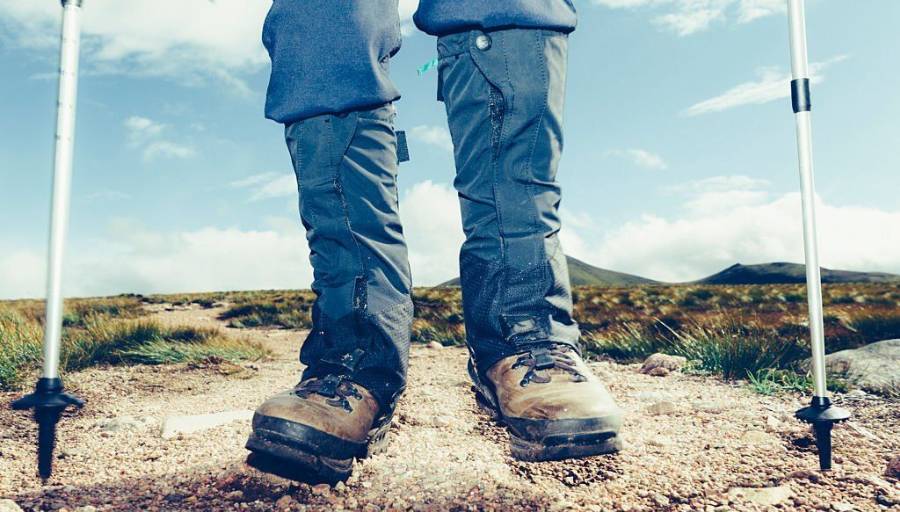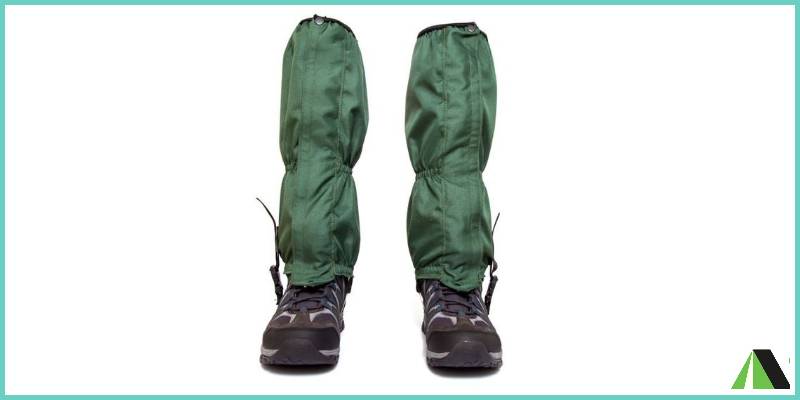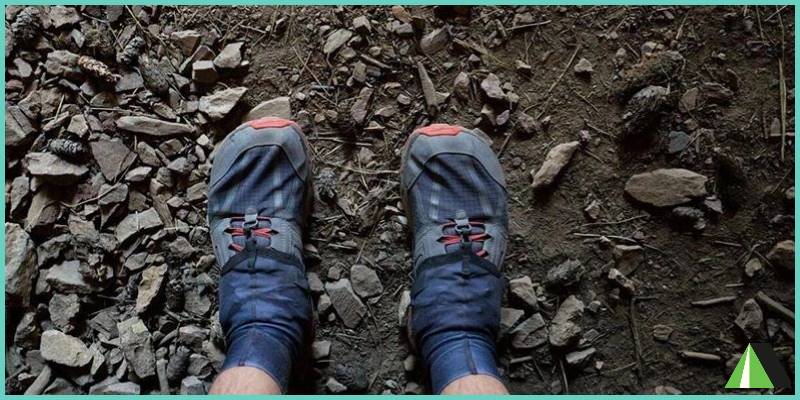
What exactly are hiking gaiters, and why should you consider using them? These questions often arise when encountering the term, and it’s natural to wonder about their significance. Originally designed for racehorses, hiking gaiters have now become a staple in the trail section of many specialized stores. To grasp their value and relevance, let’s explore the topic together.
What Are Hiking Gaiters?
By definition, gaiters are parts affixed to the junction of the shoe and the bottom of the pants.
One Piece Affixed to the Pants
Gaiters are neither strictly garments nor tools; instead, they are accessories positioned at the junction of your shoes and the bottom of your pants. Their purpose is to provide protection to a vulnerable area—the feet and ankles. Gaiters come in various designs; you may find models that attach with zips, others with a zipper, as in figure 1, or even certain models with belt buckles.
A Wide Variety of Materials
Whether designed for horses or hiking, gaiters can be crafted from a variety of materials. Until a century ago, leather was the predominant choice. However, starting from the mid-20th century, their typology began to diversify. Today, you can find gaiters made of materials such as plastic, polyester, or cotton. Beyond its utilitarian purpose, the gaiter has evolved into a stylish accessory with various designs to suit everyone. Closure elements, such as buckles, are available in materials like pewter, stainless steel, or iron, offering a range of tones and aesthetics for the product.
Models With Variable Lengths
Hiking gaiters today are produced in many sizes to match various gear. For example, Salomon low-rise gaiters will fit most low-rise hiking shoes! The majority of hiking gaiters available on the market are mid-rise. This means they extend up to the calf to ensure a secure fit around the leg. These mid-rise gaiters are the most commonly used by hikers.

The Usefulness of Hiking Gaiters
Now that we’ve seen the appearance and various sizes of gaiters in the market, let’s explore the multiple protections they offer. In other words, what are the specific safeguards provided by hiking gaiters?
Protection Against Rain and Snow
We have previously addressed the challenging issue of moisture in several articles, such as those covering snowshoeing or methods to prevent foot blisters. Humidity and water are discomfort factors during walking and can be the root cause of various ailments.
The water that we have in our shoes enters by streaming effect along our pants then it enters directly by the top of the shoe. The gaiters, which come to close this risk zone, precisely make it possible to prevent the penetration of water into the shoes, whether the latter is in the form of liquid or snow.
Protection Against External Objects

Humidity is not the sole challenge faced during a hike. Mud and lightweight sediments, such as dust and sand, can all become sources of exhaustion if they manage to penetrate your shoes. New models of gaiters, which are better tied around the ankle, are intended to prevent this sediment from getting under your feet. Thanks to the gaiters, you gain comfort during your walk and drastically reduce the risk of injury while hiking.
By eliminating open spaces, gaiters also prevent stones, which are often abundant on certain mountain trails, from entering the shoe. In this way, gaiters can be highly valuable protective gear for mountain climbing or walking on stony paths.
Other Beneficial Effects
More broadly, each model of the gaiter is designed to meet a specific need. You will therefore find warm and very breathable models when other models are waterproof. Overall, hiking gaiters increase the lifespan of your hiking shoes and especially your laces since they are protected from bad weather and humidity.
Your hiking socks, which are no longer soiled by sediment or permanently wet by rain, have fewer holes. As for your pants, they also gain longevity since the bottom is protected against rain and mud. Even if the effect is minimal, wearing hiking gaiters in summer can protect you against tick bites and therefore against Lyme disease by closing access to your legs!
Contexts of Use of Hiking Gaiters
“When should you wear gaiters when hiking?” This is the question that crosses the minds of all hiking enthusiasts before gearing up. There’s even speculation about whether hiking gaiters are genuinely useful when embarking on a long-distance trek.
You might find it disappointing, but there is no definitive and firm answer to this question! It actually depends on your walking preferences and your specific protection needs. To find out, you’ll need to gain some hiking experience. It’s often when faced with a specific challenge that you’ll realize the utility of gaiters. They can be particularly beneficial if you frequently walk on muddy paths or encounter puddles of water along the way.
Unfortunately, sometimes you step into a shallow puddle, then gaiters can be the protection. These will save you from blisters on your foot. They are very interesting when you can’t stand the stiffness of rain pants. Affixed to your ankle, you won’t get water in the shoes and keep your walking agility.
They also prove beneficial in the context of snowshoeing, as snow can accumulate up to the top of the ankle. In the midst of winter, especially with a suboptimal choice of socks, gaiters can help keep your ankles and feet warm. The key lies in selecting a model that aligns with your specific sport (hiking, mountaineering, snowshoeing) and personal preferences!
The verdict
Hiking gaiters are currently gaining popularity, offered in numerous models and available in three sizes: low, medium, and high. These accessories serve to bridge the gap between the shoe and the pants, keeping the ankle warm and shielding the foot from various issues encountered by hikers, including sand, stones, rain, and snow.
They, of course, indirectly mitigate the occurrence of blisters on the foot and diminish the premature wear of hiking socks, shoe laces, and trousers. Waterproof and insulated gaiters prove useful in almost any walking context, making them suitable for all seasons and weather conditions. In short, they adapt to your personal sports practice, your morphology, and your needs in terms of protection.
Why deprive yourself of such hiking equipment?